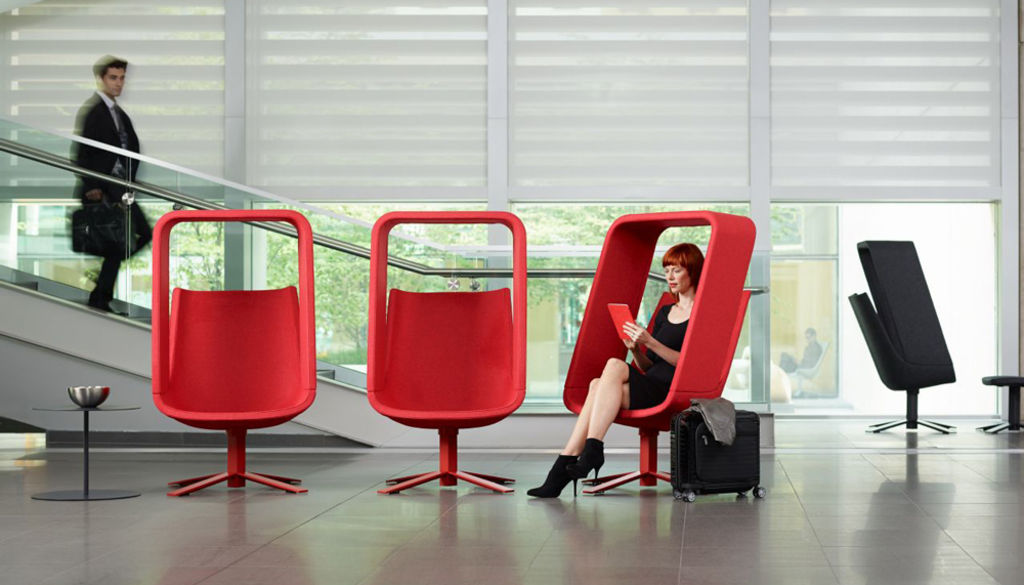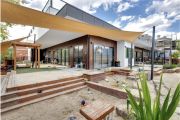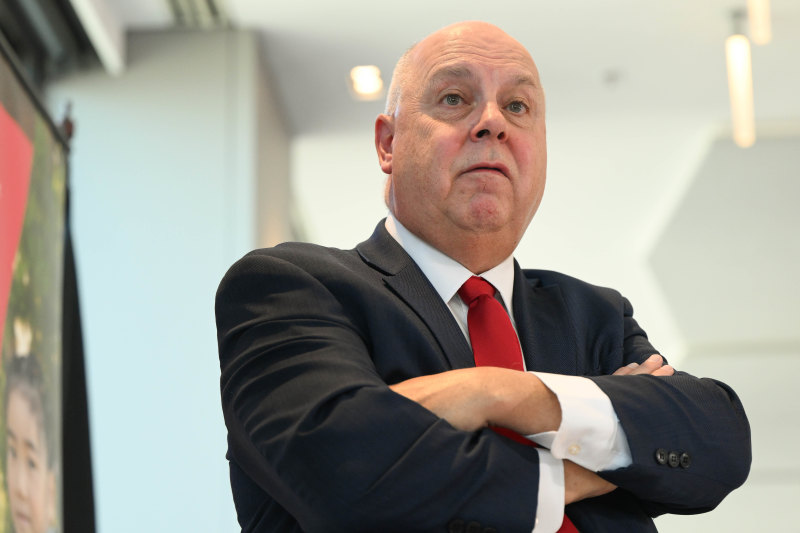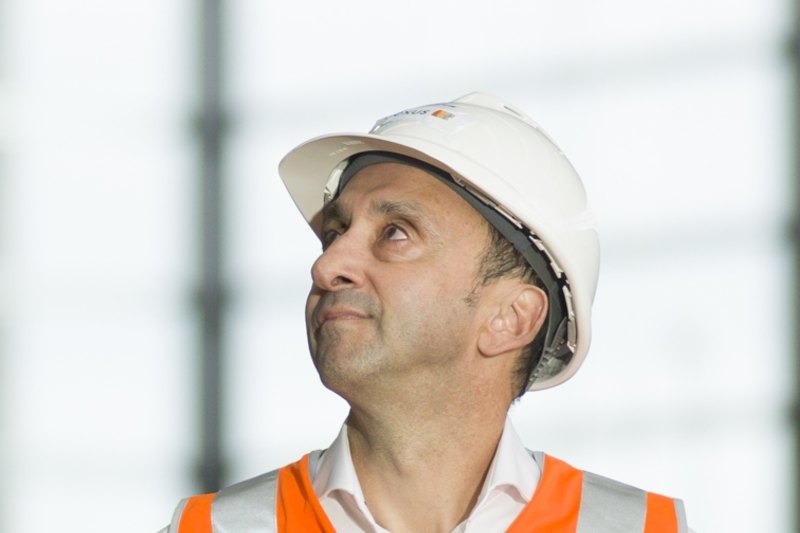
We want walls: The future of office design - and the demise of open plan
The conventional open-plan office is being replaced by a range of quirky layouts that combine work and leisure, writes Tom Ough
It was supposed to herald a new age of collaborative co-working – but is it all over for the open-plan office? Increasingly, wall-free working spaces, still used by most UK businesses, are being supplanted by flexible layouts, with spaces for concentration as well as communication.
It will be welcome news to anyone who has had to don headphones to block out their colleagues’ detailed discussion of last night’s TV or endured the annual office lurgy.
In July, a survey for Savills and the British Council for Offices found that almost half of workers in open-plan offices were dissatisfied with noise levels, and showed increasing demand for individual control of temperature and lighting.
More and more, designers and employers are choosing layouts that combine the best of both worlds – the quietness of cubicle offices with the egalitarianism of open plan.
“It’s about giving control back to people,” says Dr Matthew Davis, who studies the psychology of office design at Leeds University Business School.
And with the news that sedentary working is as bad for us as smoking, office design has never been so important.
Dr Davis’s research has highlighted the poor hygiene and frequent distractions of open-plan offices. One report even found that the loss of productivity is so great it outweighs the money saved by putting everyone in the same room.
While open-plan has been around in some form or other for as long as clerks have clerked and typists have typed, it was in 1950s Germany that people began to think innovatively about it.
In Hamburg, a small office of consultants attempted to foster a collaborative working environment by sitting in the same room with clusters of desks separated by screens and plants rather than serried in rows.
The idea of Bürolandschaft – “office landscaping” – was born. It caught on quickly in Europe, where its non-hierarchical arrangement chimed with post-war socialist politics. Eventually, the open-plan hit the Anglosphere, overcoming the rigid cellular model in which workers had been walled away from each other.
 Hold the phone: Did you know the open plan office originated in the 1950s? Photo: Getty Images
Hold the phone: Did you know the open plan office originated in the 1950s? Photo: Getty Images
Soon enough the open-plan concept had been watered down. Desks were put in simple rows, with little to break up the uniformity.
The design is still popular among some professions. A trading floor will always need the quickfire communication offered by open-plan offices. But in the main, these kind of offices are falling out of vogue.
“We’re moving towards what is known as activity-based working,” says Jeremy Myerson, the Helen Hamlyn Chair of Design at the Royal College of Art, “in which people have a range of spaces in which they work.”
Myerson says organisations are now seeking flexible offices, with private pods where workers can hunker down without interruption from mobile phones, for instance.
Such spaces also incorporate dedicated project rooms with screens and pin-up boards, less formal than a traditional meeting room, and less sedentary than a phalanx of desks.
Myerson says the need for contemplation is also important: “The big trend now is recognising that people need to tune out.”
Google Zurich has its own aquarium, all soft carpeting and dappled blue light, where employees can lounge meditatively in bathtubs.
 Google’s offices in Zurich have an aquarium room where staff can relax in bathtubs. Photo: Camenzind Evolution
Google’s offices in Zurich have an aquarium room where staff can relax in bathtubs. Photo: Camenzind Evolution
Not every workplace will install an aquarium, but designers are increasingly mindful of our occasional need to escape the hubbub.
A chair that walls its occupant on three sides is one of the newest offerings from Haworth, the office furniture retailer. The Windowseat, sleek and slanted, with a hint of a sports car whose doors open up instead of out, was designed by Mike Simonian and Maaike Evers.
“Open-plan offices need to provide moments that are private,” says Simonian. “Closed-plan offices need to provide moments that encourage exchange and collaboration.
“We designed Windowseat to provide a sense of privacy and personal space to complement open-office plans.”
 The Windowseat by Haworth. Photo: Haworth
The Windowseat by Haworth. Photo: Haworth
Even more outlandish designs could soon be on the market. A chair with zip-up sides, dreamed up by Lund University student Rae Bei-Han Kuo, turned heads at Milan Design Week in April. “When I really need to think,” says Kuo, “I have to be in a quiet and private space.
“I started to introduce some ‘walls’ that can help with noise and privacy, but in a more flexible way. You can easily unzip them when you don’t need them.”
It may be a while until such a chair appears on the UK market, but the flexible office has its standard-bearers nevertheless. Named by Myerson as one of the best co-working offices around, the Second Home development off east London’s Brick Lane provides individual cabins for its various tenants, under soft, sun-like lighting.
“A homogenous and generic environment isn’t any good for creativity or happiness,” says Rohan Silva, 35, who co-founded the development after leaving his job as a policy adviser to David Cameron.
“There are other ways of doing it, like learning from nature. We evolved in places full of plants, trees, curved lines and complexity, and that’s what we’ve tried to mimic with Second Home.”
It’s a far cry from the humdrum, linear, open-plan hive office – and it may well be the future.
Are these the UK’s top offices?
DeskLodge, Bristol
This co-working space for entrepreneurs and local businesses has a room kitted out with Lego and a soundproofed room for those who like to work to music.
Google, London
 Google’s London office. Photo: Google
Google’s London office. Photo: Google
Sleep pods, free food, even a 90-metre running track – perhaps Google doesn’t want its workers to leave its massive new Kings Cross office.
Rentalcars.com, Manchester
Road markings down corridors are part of this quirky design, and colourful themes for each floor that include a mock park as a break-out space and a fake beach.
Fruit Towers, London
 The offices at Innocent Drinks, Fruit Towers. Photo: Innocent Drinks
The offices at Innocent Drinks, Fruit Towers. Photo: Innocent Drinks
Staff at Innocent Drinks’ HQ can have as many smoothies as they like and are encouraged to sit somewhere different each day to encourage mixing.
The big top circus tent, ball pool, popcorn machine and huge plastic elephant sculpture keep the software developers who work there entertained.
The Telegraph Group, London
Get a weekly roundup of the latest news from Commercial Real Estate, delivered straight to your inbox!







